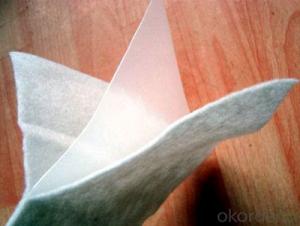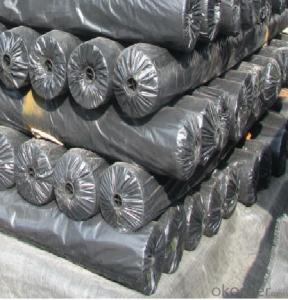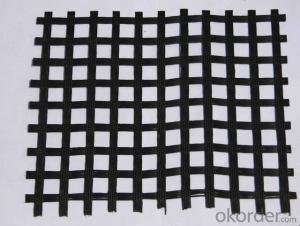Composite Geotextile With Membrane, Nonwoven Geotextiles In Civil Engineering
- Loading Port:
- Qingdao
- Payment Terms:
- TT OR LC
- Min Order Qty:
- 500 m
- Supply Capability:
- 50000 m/month
OKorder Service Pledge
OKorder Financial Service
You Might Also Like
Specifications
composite geotextile with membrane,nonwoven Geotextiles In Civil Engineering
1) Weight:100gsm-1500gsm
2) width:Within 8m
3)le
composite geotextile with membrane,nonwoven Geotextiles In Civil Engineering
Product Description
Geotextiles also called geotextile fabrics, it’s permeable geosynthetics made of synthetic fibers through woven or needle punched.
Geotextiles including :needle punched nonwoven geotextile , filament woven geotextile , split yarm PP woven geotextile,composite geotextile + geomembrane,Geotextile Bags.
1) Staple fibers needle punched non woven geotextile
The geotextile is made of polypropylene staple fibers on cross-laying equipment and needle punched equipment.
It owns the advantages of acid and alkali resistance, erosion resistance, aging resistance, large strength, stable size, good filtrability etc.
2 ) Filament non woven geotextile
Filament geotextile has features as follows: High strength, good capacity of elongation and high biology tolerance, alkali tolerance, acidity tolerance, weather resistance good filtration and fine drainage capacity etc. Also it is of low cost, easy in construction and use effects.
3) Geotextile membrane:
1. One piece of geotextile and one piece of membrance :Wight:100~1000/m2 , Thickness : 0.1~1.5mm
2. Two piece of geotextile and one piece of membrance :Wight:80~600/m2 , Thickness : 0.2~1.5mm
3. One piece of geotextile and two piece of membrance : Wight:100~1000/m2 , Thickness : 0.1~0.8mm
4. multi-layers :Wight:100~1000/m2 , Thickness : 0.1~0.8mm
Flexibility is good,except of geotextile's isolation,drainage, reinforcement,protective functions,It is also impermeable.
Usage: Widely used in dam,traffic tunnel,road,airport,drainage,housing,environmental protection and other fields for waterproof protection,reinforcement etc.
- Q:Can geogrids be used in embankment stabilization?
- Yes, geogrids can be used in embankment stabilization. Geogrids are commonly used in civil engineering projects to enhance the stability of embankments by providing reinforcement and reinforcement to the soil. They help to distribute loads evenly and reduce the potential for soil erosion, making them an effective solution for embankment stabilization.
- Q:Can geogrids be used in green roof systems?
- Yes, geogrids can be used in green roof systems. Geogrids provide reinforcement and stability to the soil and vegetation layers of a green roof, preventing soil erosion and enhancing the structural integrity of the system. They can help distribute the weight of the green roof evenly, reduce the risk of subsidence, and improve overall performance and longevity.
- Q:How do geogrids prevent cracking in asphalt pavements?
- Geogrids prevent cracking in asphalt pavements by providing reinforcement and stability to the pavement structure. They effectively distribute the load and stresses across the pavement, reducing the potential for cracking caused by fatigue, thermal expansion/contraction, or heavy traffic. The geogrids act as a barrier to prevent the propagation of cracks, enhancing the overall durability and longevity of the asphalt pavement.
- Q:Are geogrids effective in reducing pavement rutting?
- Yes, geogrids are effective in reducing pavement rutting. They provide reinforcement to the pavement structure, distributing loads more evenly and improving its overall stability. By reducing the excessive movement of the underlying soil, geogrids help mitigate rutting and extend the lifespan of the pavement.
- Q:What is the effect of junction strength on geogrid performance?
- The effect of junction strength on geogrid performance is significant. A stronger junction ensures better interlocking and connection between the geogrid's components, leading to enhanced load distribution and resistance against installation stress and long-term deformation. It allows the geogrid to effectively restrain and stabilize the soil, improving overall geotechnical performance and longevity.
- Q:Fiberglass geogrid is mainly used for old road reconstruction, the main purpose is to reduce reflection
- Geotextiles are used for road, railway, tunnel, dam, tailings treatment, isolation, filtration, drainage, reinforcement, protection and enhancement...Analysis of the causes of cracks in the asphalt overlay, the formation of a new type of excellent geotechnical substrates by special coating process.Asphalt overlay on old cement concrete pavement is a kind of special pavement structure, and its stress and strain characteristics are quite different from those of general elastic layered system.
- Q:How do geogrids help in reducing construction equipment requirements?
- Geogrids help in reducing construction equipment requirements by providing soil stabilization and reinforcement. They act as a support structure, distributing loads and reducing the need for heavy machinery. This allows for cost-effective and efficient construction, minimizing the requirement for extensive equipment usage.
- Q:What is the difference between plastic geogrid and grid
- Geogrid is suitable for various kinds of dams and subgrade reinforcement, slope and tunnel wall reinforcement. Large airport, parking lot, wharf freight yard and other permanent bearing foundation reinforcement.
- Q:How do geogrids improve the performance of mechanically stabilized slopes in clayey soils?
- Geogrids improve the performance of mechanically stabilized slopes in clayey soils by providing additional reinforcement and enhancing the overall stability of the slope. They help distribute the loads more evenly, reducing the potential for soil erosion and slope failures. Additionally, geogrids increase the shear strength of the clayey soil, preventing excessive deformation and ensuring long-term stability of the slope.
- Q:Can geogrids withstand heavy loads?
- Yes, geogrids are designed to withstand heavy loads. They are commonly used in civil engineering and construction projects to reinforce soil and provide stability, even under significant weight or pressure. Geogrids have high tensile strength and durability, enabling them to effectively distribute and transfer loads, making them suitable for various applications such as roadways, retaining walls, and reinforced slopes.
1. Manufacturer Overview |
|
|---|---|
| Location | |
| Year Established | |
| Annual Output Value | |
| Main Markets | |
| Company Certifications | |
2. Manufacturer Certificates |
|
|---|---|
| a) Certification Name | |
| Range | |
| Reference | |
| Validity Period | |
3. Manufacturer Capability |
|
|---|---|
| a)Trade Capacity | |
| Nearest Port | |
| Export Percentage | |
| No.of Employees in Trade Department | |
| Language Spoken: | |
| b)Factory Information | |
| Factory Size: | |
| No. of Production Lines | |
| Contract Manufacturing | |
| Product Price Range | |
Send your message to us
Composite Geotextile With Membrane, Nonwoven Geotextiles In Civil Engineering
- Loading Port:
- Qingdao
- Payment Terms:
- TT OR LC
- Min Order Qty:
- 500 m
- Supply Capability:
- 50000 m/month
OKorder Service Pledge
OKorder Financial Service
Similar products
New products
Hot products
Hot Searches
Related keywords





























